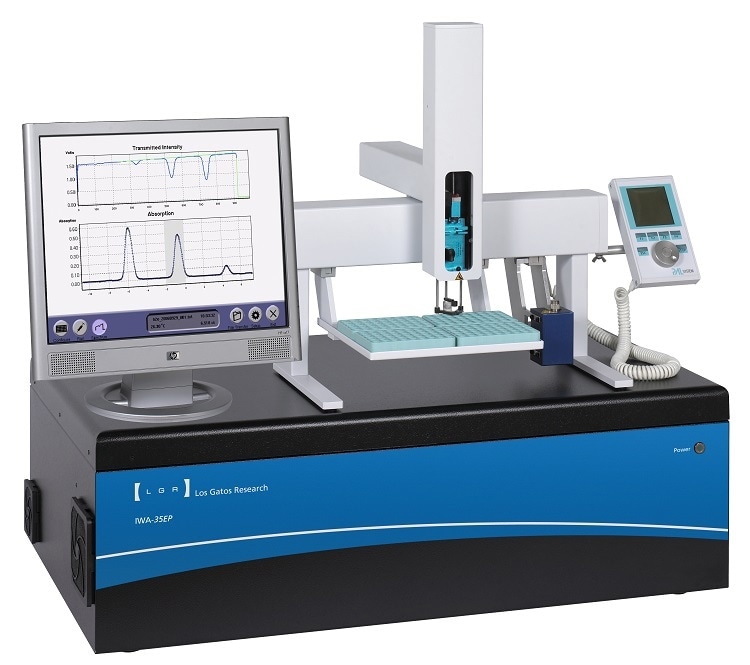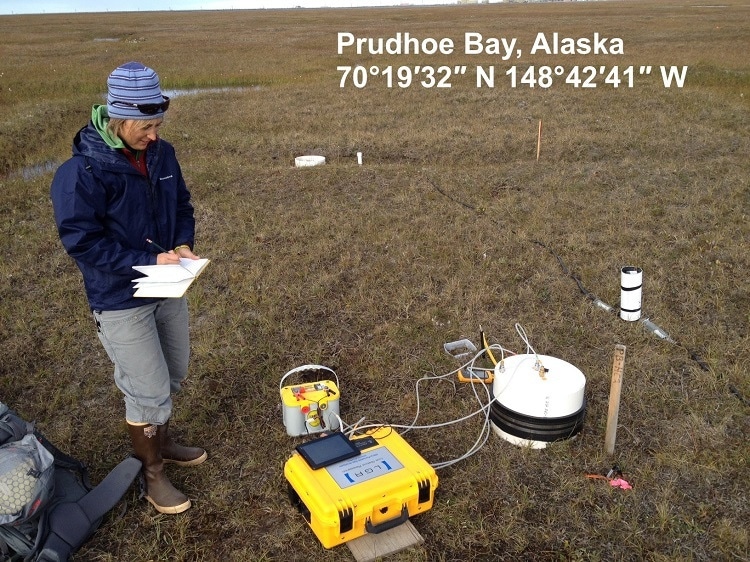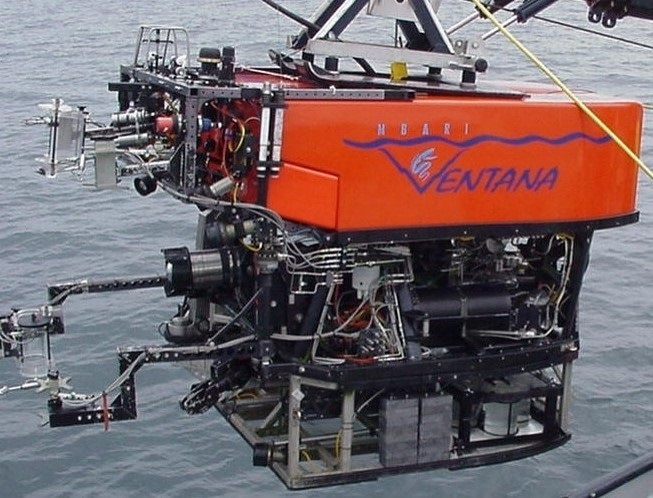 Interview conducted by Mychealla RiceDec 11 2017
Interview conducted by Mychealla RiceDec 11 2017In this interview, Dr. Frédéric Despagne, Industry Manager for the laser gas and infrared analyzers at ABB talks to AZoM about the latest generation of laser absorption analyzers "Los Gatos Research" that enable high-performance gas measurements for environmental applications
Please tell us about the company and the work you do
Headquartered in Zurich, ABB is a pioneering technology leader in electrification products, robotics and motion, industrial automation and power grids, serving customers in utilities, industry and transport & infrastructure globally. The company is active all over the world, with more than 136,000 employees.
Our Measurement and Analytics business unit supplies sensors, analyzers and services to help our customers in environmental or industrial fields measure and understand geophysical or industrial processes, and when possible optimize them.
As the Industry Manager for Environmental and Research market, I am in charge of the global sales and portfolio of ABB high-performance laser gas analyzers and Fourier Transform infrared spectrometers that are manufactured in our Silicon Valley and Québec city production facilities.
This involves support and management of the sales network, as well as coordination of marketing activities. A key aspect of my role is to stay close to our customers and partners in environmental and research fields to precisely understand market needs and evolutions, and transfer those requirements to our R&D and production teams. We must constantly make sure that the ABB portfolio of instruments and services offers the highest level of performance and satisfaction to our customers.
Ultra-portable, laser-based gas analyzers for environmental and industrial applications
Please tell us a bit about ABB’s Laser Absorption Analyzers?
The ABB LGR-ICOS product line (former “Los Gatos Research”) consists of high-performance gas analyzers for fast simultaneous measurement of various gases, down to trace levels.
Those laser-based analyzers can be used for environmental and research applications, as well as industrial process monitoring. The instruments are available in several configurations including rackmount, benchtop or ultra-portable packages for field deployment.
What are the typical measurements that can be performed with laser absorption technology?
The technique allows to detect and quantify one or several components in a gaseous matrix, by measuring their associated optical absorption when irradiated with a light beam, as per Beer-Lambert law. Most of the ABB LGR-ICOS analyzers operate in the infrared and near-infrared portions of the electromagnetic spectrum.
Apart from concentrations of various species, the technique is also sensitive enough to detect subtle differences in the absorption features of the various isotopes of a single chemical element.
This technique allows us to determine isotopic ratios of important elements like oxygen, carbon, hydrogen or nitrogen that are present in many natural compounds.
Explain the challenges that users normally face with alternative technologies?
Quantitative gas analysis can be performed with a method such as chromatography but the approach is rather slow, several minutes per analysis and requires consumables for column preparation. Electrochemical sensors also require consumables and are extremely sensitive to cross-interferences and poisoning.
Optical absorption methods like non-dispersive infrared analyzers require less consumables but they also suffer from cross-interferences and have a limited sensitivity which is an issue for trace gas analysis.
Full spectrum methods such as Fourier Transform infrared spectroscopy often require a complex calibration scheme that involves multiple calibration samples and mastering of advanced chemometrics techniques to accommodate interference and sample matrix effects.
On the contrary, the first generations of laser absorption instruments (tunable diode lasers) are highly specific and therefore robust to cross-interferences, but they are sensitive to drift and signal noise which affects their limit of detection.
For stable isotope analysis, a reference method has long been isotopic ratio mass spectrometry, which has limited precision and requires costly consumables and operator expertise.
In contrast to all those methods, the ABB LGR-ICOS laser gas analyzers combine unique attributes like speed (samples are typically scanned at frequencies in excess of 300 Hz), sensitivity (down to ppt levels), wide dynamic range, robustness and ease of implementation.

Figure 1. ABB LGR-ICOS Isotopic Water Analyzer. Image Credit: ABB Ltd.
What environmental applications will benefit from the laser absorption analyzers? How?
Some of our primary customers globally are the meteorological and atmospheric agencies that are tasked with reporting, understanding and forecasting atmospheric conditions across the globe.
Among other parameters, they need to precisely measure trace gases, in particular, greenhouse gases and they value the analytical performance of the ABB gas analyzers that typically exceed the World Meteorological Organization precision specifications.
A number of those meteorological agencies have our instruments installed in strategically located tall towers to continuously record atmospheric concentration of species like carbon dioxide, carbon monoxide, methane, nitrous oxide; ammonia or moisture.
The governmental and municipal agencies in charge of emissions compliance monitoring also often use our technology either in fixed or mobile air quality monitoring stations, to perform air quality measurements near industrial areas and ensure residents health.
In the academic world, scientists working on geophysics and climate research, in particular, global warming and greenhouse effect- enjoy the portability and ease of implementation of our field units that can be taken to various locations on all continents, from sand deserts or ice banks to peatlands, mountains and forests.
They typically perform in-situ measurement of gas emission rates in different ecosystems, agricultural fields or water areas. For instance, it is common for our customers to bring their portable ABB LGR-ICOS instrument to remote locations for unmanned, continuous chamber-based measurements of soil flux in the field.

Figure 2. ABB LGR-ICOS Ultraportable Greenhouse Gas Analyzer used for soil flux measurement in Alaska oil field. Image Credit: U.S. Geological Survey
The intrinsic speed of analysis of the ABB LGR-ICOS analyzers also enables fast “eddy covariance” measurements of vertical turbulent fluxes, an important method for assessing and understanding atmospheric currents in different conditions.
As our instruments can also precisely measure stable isotope ratios, they are extremely useful for scientists involved in water, carbon or nitrogen cycle studies.
In medical research, the ABB LGR-ICOS analyzers help doctors understand breathing patterns and energy expenditure of animals or humans. A number of public or private laboratories use ABB stable isotope analyzers to detect frauds, food adulteration or perform origin certification of natural products.
There are multiple other applications of this technology. Overall, several thousands of our instruments have already been installed and used, either in laboratories, in cars, in airplanes or drones, in agricultural fields and forests, in research vessels and even underwater for in-situ measurement of gases dissolved in water.

Figure 3. The ABB LGR-ICOS trace gas analyzers have been installed in airplanes, drones, cars and many other applications. Image Credit: Jag_cz/Shutterstock
Can you explain the basic principles of ABB’s solutions? What are the benefits for the end-users?
ABB LGR-ICOS uses a patented technology called Off-Axis Integrated Cavity Output Spectroscopy (OA-ICOS) that represents the 4th generation of cavity-enhanced laser absorption techniques. One of the most important attributes of OA-ICOS analyzers is their sensitivity –down to parts per trillion levels- which makes them extremely appropriate for trace gas measurements.
This sensitivity is the consequence of the large “pathlength” that can be achieved in the optical cavity (gas cell) where the sample gas is measured.
The optical cavity is only a few centimeters long but thanks to the use of highly reflective concave mirrors, the infrared laser radiation injected inside the cavity is trapped and performs multiple bounces where it interacts with the target molecules before exiting.
The effective pathlength is application-dependent and can be adjusted based on the required limit of detection, but it typically exceeds several kilometers.
In addition, the technique is very specific (i.e. robust to cross-interferences) as the lasers can be selected and tuned to specifically and unambiguously record the absorption features of the molecules of interest.
A major advantage of OA-ICOS technology lies in its insensitivity to optical misalignment, in contrast with all other laser absorption techniques. This means in the worst case, the optical cavity of the instrument can be cleaned in the field by the end-user, instead of being shipped back to the factory for cleaning and re-alignment as would be the case for any other type of laser gas analyzer. The portability and robustness of the ABB LGR-ICOS analyzers are one of their trademarks, and many of our customers bring their unit in very extreme conditions without having to worry about possible contamination of the optical cavity, a pitfall of most other optical absorption techniques.
Are there specific conditions required to implement ABB trace gas analyzers?
Not really, this is also one of the strengths of the OA-ICOS technology. Our instruments make gaseous measurements either from ambient air, industrial streams or specific sample headspace. Their design significantly simplifies sampling requirements as it eliminates the use of columns, carrier gas, tapes, solvents or scrubbers.
Using membrane separators, we can even analyze gases dissolved in water, and also perform stable isotopic ratio in liquid water using a vaporization module. Typical instrumental setup involves a tubing kit through which the gas sample to be analyzed is drawn inside the analyzer optical cavity with an internal pump.
For the most sensitive applications, a preliminary moisture drying step can be required, which is a standard procedure for most users performing gas measurements.
Discrete gas samples can also be injected manually with a syringe. The corresponding gas concentration variations or isotopic ratios are displayed in real time, either on the analyzer computer screen or on a tablet or smartphone since the instrument can be operated remotely via a wireless connection.
Pressure variations are monitored inside the analyzer and can automatically be compensated for on the fly if needed. The packaging of each analyzer is always adapted to the end-users operational constraints.
The ABB LGR-ICOS instruments can be operated over a wide temperature range, which is also one of the reasons why they are routinely used in various locations in the air, on oceans and on all seven continents.
How can ABB analyzers address cross-interference effects that are typical with gas applications?
The ABB LGR-ICOS gas analyzers are supplied as turnkey packages for various applications and combinations of gases. With each package, potential interferences from non-target analytes in the sample matrix have been mitigated with proper selection of the excitation laser.
We also have the possibility to combine several lasers in a single instrument for simultaneous measurements of overlapping species. One important characteristic of OA-ICOS principle is that it records fully resolved absorption lineshape of the analytes, and not only a few discrete wavelengths.
This true wavelength scanning contributes to the precision and linearity of the ABB LGR-ICOS instruments. In situations where the absorption features of other species may interfere with the target analyte signature, the instrument software uses the detailed information of the peak areas to identify and precisely correct for interferences or matrix effects.
How often do the ABB analyzers need to be recalibrated?
Each instrument is pre-calibrated and provides measurements with +/-1% uncertainty over the entire specified operating temperature range without further calibration.
What developments can be expected for laser gas analyzers in the future?
Ongoing developments build on the proven design of the OA-ICOS technology for existing applications, by further improving analytical performance thanks to the use of latest generation components that further reduce electronics noise, enhance optical transmission and improve pressure stability.
Those hardware improvements are combined with the addition of new software functionalities focusing on instrument health-monitoring and self-diagnostic. Another axis of development relates to the reduction of instrument size and weight, to leverage the ruggedness and portability of OA-ICOS instruments.
Today some of our high-performance analyzers already weigh less than 6 kg and can be used for innovative environmental applications like airborne greenhouse gas monitoring or leak detection from drones. In parallel, we recently launched the first-ever portable versions of laser-based isotopic water and carbon dioxide analyzers. More developments will follow shortly.

Figure 4. The Remotely Operated Vehicle “Ventana” features an ABB LGR-ICOS Deep Water Gas Analyzer in aluminum cask cylinder with sampling wand that was used to perform isotopic characterization of methane flux from seep sediments at 900m depth. Image Credit: Monterey Bay Aquarium Research Institute
Where can our readers go to find out more?
Information on ABB LGR-ICOS products specific to environmental and research applications can also be found at: http://www.lgrinc.com/
About Dr. Frédéric Despagne

Dr. Frédéric Despagne has a background in analytical chemistry and chemometrics. Frédéric joined ABB in 2000 in the Measurement and Analytics division and has held various application, sales and marketing-related positions for industrial implementations of infrared and near-infrared spectroscopy in refining, chemical, semiconductor or pharmaceutical markets.
Recently, Dr. Frédéric Despagne became the global sales and marketing manager for the ABB laser gas and infrared analyzers in the Environmental and Research market.
Disclaimer: The views expressed here are those of the interviewee and do not necessarily represent the views of AZoM.com Limited (T/A) AZoNetwork, the owner and operator of this website. This disclaimer forms part of the Terms and Conditions of use of this website.